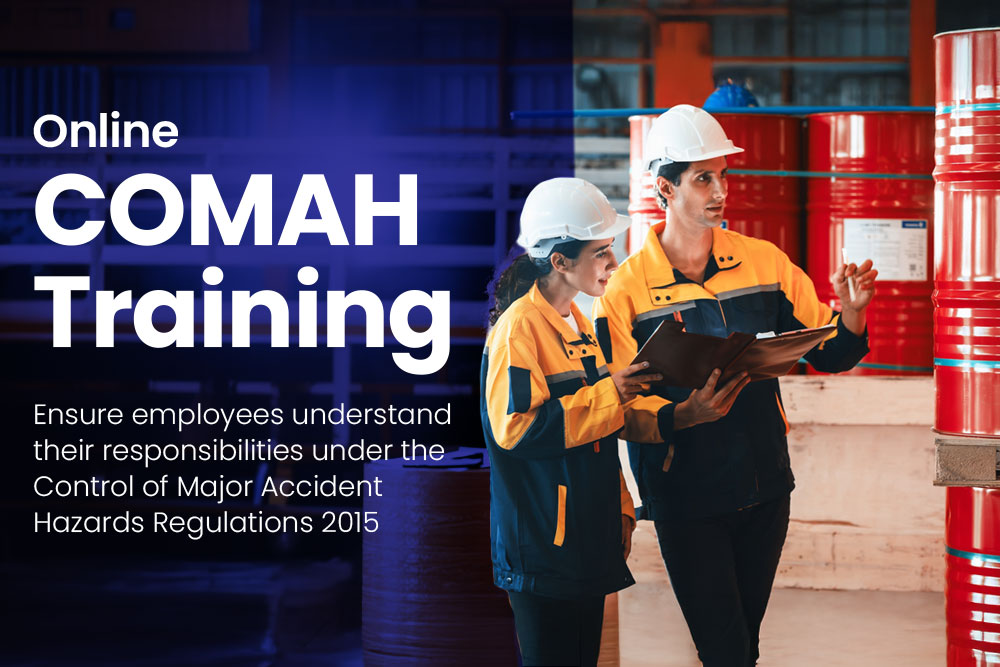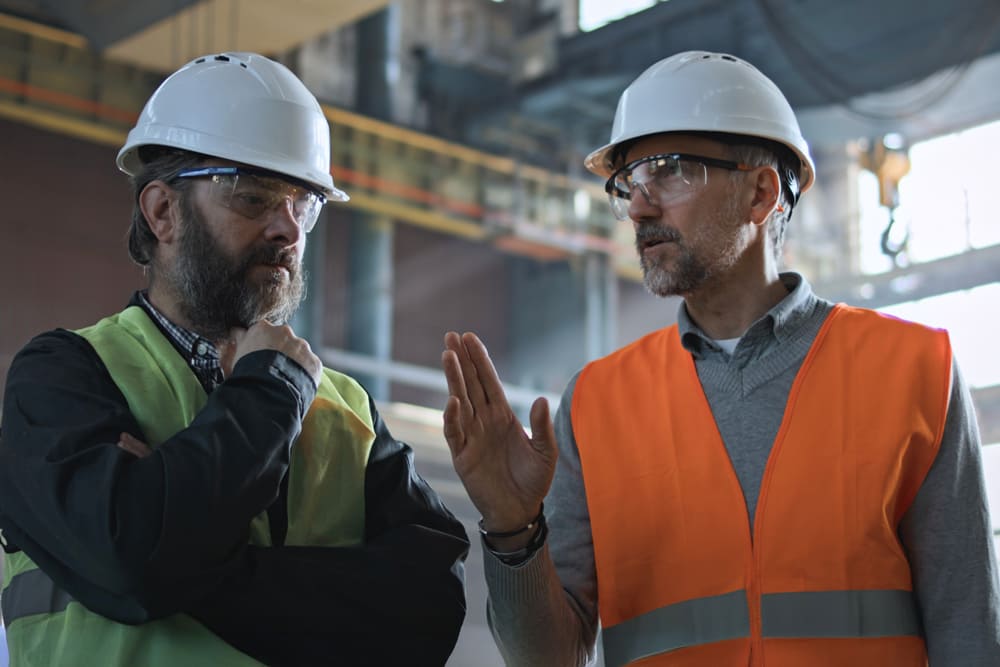
Leadership styles directly influence how employees behave, communicate and make decisions – and this has a significant impact on workplace safety.
As a leader, how you set expectations, respond to risks and talk with your teams can determine whether safety is prioritised or relegated to box-ticking.
This blog explores the connection between leadership styles and safety outcomes. It highlights what outstanding leaders do to achieve world-class safety performance and provides advice to help you do the same.
Key Takeaways
- Leadership styles shape how workers behave, communicate and respond to safety rules.
- No single style is truly best – effective leaders adapt their approach to the situation.
- Participative styles encourage reporting, openness and safer ways of working.
- Clear direction is essential in emergencies, but worker participation drives long-term results.
What Are Leadership Styles?
Leadership styles describe the different ways leaders influence, motivate and interact with the people they manage. They shape decision-making, communication, engagement and how teams respond to challenges or setbacks.
Researchers have identified a range of leadership styles, each defined by specific attitudes, values and behaviours. Some leaders adapt their style depending on the situation, while others may not fit neatly into any one category.
Different leadership styles partly explain why some organisations achieve stronger safety performance than others. The way you lead directly affects how employees engage with rules, training and reporting – all of which influence your organisation’s safety outcomes.
How Is Leadership Different to Management?
While they overlap, it’s important to distinguish leadership from management.
Management focuses on processes. It generally covers planning, organising and controlling resources to meet objectives.
Leadership focuses on people. It generally covers communication, relationships and building the culture in which safety decisions are made.
Health and Safety Courses
Our health and safety courses support legal compliance and effective risk management. They raise awareness of common workplace hazards and teach the fundamentals of safe working.
Why Leadership Styles Matter in Health and Safety
Leaders set the tone for health and safety. The way you act, speak and make decisions defines how seriously safety initiatives are taken and how workers engage with them.
Every leadership style influences behaviour in a different way. At one end of the spectrum, autocratic leaders give clear, direct instructions that may promote safer behaviour in theory but stifle participation. At the other end, laissez-faire leaders allow workers to take responsibility, which can encourage initiative but also lead to inconsistency.
Most leaders fall somewhere in between. Understanding where you sit on this spectrum – and how that affects your team’s approach to safety – is the first step toward building a stronger safety culture.
Common Leadership Styles
Leadership styles run from tightly controlled to highly hands-off. Each style influences how workers respond to safety rules, training and reporting.
Autocratic Leadership
Autocratic leaders make decisions without consultation and expect strict compliance. This approach avoids ambiguity and can yield fast results, but it discourages workers from raising concerns or contributing ideas.
Authoritative Leadership
Authoritative leaders set a clear vision and explain the reasoning behind decisions. This style strikes a balance between compliance and participation by providing direction while leaving some room for questions.
Pacesetting Leadership
Pacesetting leaders have high standards and expect their teams to match their pace. This style can improve performance, but the pressure to keep up may inadvertently encourage workers to take shortcuts.
Democratic Leadership
Democratic leaders involve their teams in decision-making. Participation strengthens trust and openness, but can delay decision-making in urgent situations.
Coaching Leadership
Coaching leaders focus on individual development and long-term growth. In safety terms, this approach helps build worker confidence and competence, but results take time and resources, such as training.
Affiliative Leadership
Affiliative leaders prioritise trust, harmony and strong relationships. Used intelligently, this style can create a positive environment where workers feel comfortable speaking up.
However, valuing harmony above all else can discourage the healthy distrust of systems and procedures that safety depends on.
Laissez-Faire Leadership
Laissez-faire leaders provide minimal direction and leave responsibility with their teams. This freedom can develop initiative, but also leads to inconsistency if safety expectations are not reinforced.
Are Leadership Styles Fixed?
A lot of advice around leadership suggests you should “find your style”, as if it’s something you’re born with.
While most leaders will naturally have one or two primary leadership styles, they aren’t fixed. You can learn new ways to lead with effort and understanding.
In fact, the most effective leaders adapt their style to fit the situation, balancing direction and participation to support safer outcomes.
Which Leadership Style Is Best for Health and Safety?
There is no single leadership style that guarantees safe outcomes.
Different situations demand different approaches. In high-risk or emergency scenarios, the clear directions and set expectations of an autocratic leader can ensure fast, decisive action.
But for safety to truly improve, workers must be given opportunities to contribute.
This is why participative styles are effective more often than not. When workers are treated more like partners, they’re inclined to report hazards, follow training and suggest safer, more efficient ways of working.
Leaders who engage their teams in this way have achieved some of the strongest safety records in history. The following examples show how different leadership approaches – all grounded in participation – have delivered outstanding results.
Paul O’Neill at Alcoa
When he was appointed as CEO of Alcoa, Paul O’Neill made safety a company priority. He famously offered his personal phone number to hourly employees with instructions to call him directly if line managers weren’t addressing safety concerns.
This radical move signalled that safety was non-negotiable and deeply valued throughout the organisation. Paul O’Neill’s efforts dramatically reduced injuries – and led to an equally dramatic turnaround in company profitability.
Admiral Rickover and the Nuclear Navy
Revered as the “Father of the Nuclear Navy”, Admiral Rickover insisted on what he called disciplined discovery – the rigorous investigation of every unexplained outcome, whether negative or positive.
He insisted his subordinates investigate every so-called pocket of ignorance, even if there was no obvious risk or drawback.
Healthcare Teams and Openness
In healthcare, psychological safety – where team members feel free to admit mistakes and question decisions – is linked to better patient outcomes.
In intensive care units, for example, high levels of psychological safety are associated with lower rates of mortality and morbidity. When leaders encourage staff to admit mistakes, it prevents others from repeating them and strengthens overall performance.
Complement Your Leadership Style With IOSH-Approved Training
Whatever the right leadership style for your workplace, you need a clear understanding of your health and safety responsibilities to ensure workers’ safety.
Our IOSH Approved Managing Safely e-Learning course provides this foundation. It explores the primary skills and tools used to manage health and safety, as well as how to measure actual safety performance.
Designed for managers and supervisors in any industry, it offers a comprehensive introduction to health and safety management, including:
- How to assess and control workplace risks
- Understanding responsibilities for health and safety
- Investigating work-related incidents
- Measuring performance and driving continuous improvement
Gain insight into health and safety management approaches approved by IOSH – the world’s largest health and safety membership organisation. Start training today and build the knowledge needed to ensure your team’s safety.





















